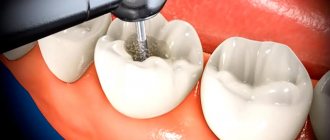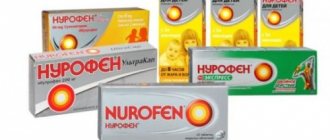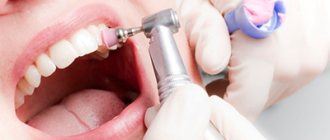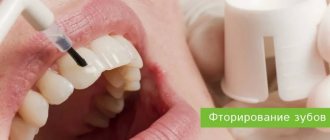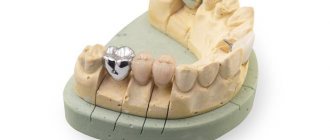Memo to the patient after caries treatment and dental filling.
Today, modern filling materials can last for decades – they are so durable and aesthetically pleasing. However, the service life largely depends not only on professional treatment, but also on the attitude of the patient himself - it is important to have professional teeth cleaning at least once a year, as well as follow some simple recommendations to ensure that the filling lasts as long as possible.
If the filling creates discomfort after treatment
Even in the dental office, after placing the filling, be sure to make sure that the restored tooth does not interfere, i.e. does not overestimate the bite (to do this, you need to create chewing movements of the lower jaw forward and backward, sideways, carefully close your teeth). The filling should not be felt or change the bite. There is no need to be embarrassed to talk about this discomfort to your doctor - sometimes the final stage of filling treatment can take even more time than preparing carious cavities and applying filling material, because The doctor’s main goal is to create multiple contact points between the filled tooth and the antagonist and in no case “turn off” the filling from the bite because this is fraught with changes in the temporomandibular joint.
After treatment, local anesthesia wears off within 1.5-2 hours. If a conductor type was used, then after 4-6 hours. Then you begin to fully feel the restored tooth, you can fully close your jaws and understand how comfortable you are after the treatment.
If you experience a little discomfort, you feel like the tooth is a little higher and your jaw isn't closing quite tightly - this is normal. The fact is that now you have been given a new filling in accordance with the bite, that is, with the shape and position of the antagonist tooth located on the opposite side. Therefore, if there is no sharp pain, be patient for a few days. If the situation normalizes and you get used to it, then there is no reason to see a doctor. If discomfort persists for 1-2 weeks, you should visit your dentist to have the filling corrected.
What are fillings and how do they appear in your mouth?
I bet you have at least one dental filling. If not, then you know exactly what it is. Teeth after damage by caries and removal of the affected areas need to be restored. Doctors most often do this by filling the resulting defect with a light-curing composite filling material. Composite fillings are a perfect color match and are quite durable, but will not last forever. As a result, a “filling” is a composite material that the doctor used to close the cavity in the tooth after removing carious tissue. The average service life of a filling is 3-5 years.
How much should you not eat after getting a filling?
If a filling made of chemical composites is installed, then you should refrain from eating and drinking for 2 hours. This is due to the fact that the material requires a certain time for final hardening.
If a “light” composite filling is placed, you can drink immediately, but you should abstain from food for 1.5-2 hours. But the reason is not in the material (it hardens a few seconds after applying and polymerizing a special lamp), but in anesthesia - with reduced sensitivity of the mucous membranes during eating, you can injure the mucous membranes of the cheeks and lips.
During the day after the filling is installed, you should only consume foods that are temperature-neutral - excessively hot or cold foods can lead to deformation of the filling. It is necessary to chew food on the opposite side for the first day - this will allow the material to fully “adhere” to the tooth tissues, without the risk of damage.
Is it possible to have professional teeth cleaning if you have caries?
The reason for the development of various types of caries on teeth is precisely deposits and plaque, so it is logical to assume that cleaning is recommended in this case. What do dentists say about this?
Regular professional care generally helps stop the progression of tooth decay. However, cleaning carious teeth is permissible only if the degree of disease is initial, in some cases - superficial or medium, when caries affects individual units of the dentition. In each individual case, the procedure is carried out at the discretion of the doctor.
It is definitely prohibited to clean using any method in case of multiple or deep caries. The affected enamel reacts very painfully to intervention, and if deep tissues are involved in the carious process, then the hygienic procedure can only intensify the development of the pathological process and aggravate the clinical picture of the disease.
Most often, ultrasonic cleaning is prescribed for caries. After treatment, the enamel is coated with a composition containing fluorine. It helps to activate the resistance of dental structures to the bacteria that cause disease and restores their anatomical structure. If necessary, fissures are sealed as additional protection against the destructive effects of caries.
In general, each type of procedure has its own contraindications. For example, laser exposure is not recommended during pregnancy, wearing braces, periodontitis, the Air Flow method is not recommended for gum disease, or asthma. The specialist will first take these factors into account before prescribing the type of cleaning.
If your tooth hurts after getting a filling
Minor pain may persist for several days or even a couple of weeks, which is explained by overheating of the tissue due to the use of boron, and therefore the preparation is usually carried out with cooling with water. In some situations, for example, with deep caries or when treating front teeth, increased sensitivity can persist even for several months. But in such a situation, you should still consult a doctor for an x-ray to make sure that there is no infected tissue left under the filling and that inflammation has not affected the nerve.
Service life and replacement of fillings
According to medical statistics, a filling should last from 3 to 5 years. And if the doctor can show you during the examination that there are signs of destruction and separation of material from the surface of the tooth, such a restoration should be replaced immediately. This way you will avoid the danger of secondary caries under the filling, which usually develops asymptomatically and does not manifest itself in any way, but can damage most of the tooth.
We regularly talk to our patients about how to extend the life of their fillings, provide free preventive examinations and explain the importance of professional cleaning. The doctor and the patient in tandem help the fillings last longer, which means they bring more comfort to the patient’s life and save his time and money.
Can my gums hurt after filling?
The gums in the area where the anesthesia was administered may ache for several days - this is completely normal and does not require any measures. The mucous membrane may also be slightly inflamed if special rings or matrices were used during treatment, which are placed on the tooth to form the correct shape of its crown and create ideal interdental contact. The gums can also be damaged if the doctor applied the filling material in close proximity to the mucous membrane or even under it - in such a situation, the gums are deliberately moved back, the gums are retracted with a special thread or coagulated. Therefore, pain is a normal reaction to external intervention.
All of these conditions are variations of the norm. But if the pain intensifies, redness and swelling of the mucous membrane progresses, you need to consult a doctor.
Air Flow
For this method of teeth cleaning, a special device is used that allows you to act on your teeth with an aerosol jet of water and soda particles. The jet pressure is very strong - such that soda, being an abrasive, cleans off mineral solid deposits in the most inaccessible areas, and air and water remove their remnants.
During the procedure, light polishing of the enamel and removal of surface pigmentation also occur. As a result, the shade of your teeth may lighten by 2-3 shades. The Air Flow method is especially recommended when wearing implants, braces, and crowns.
How to properly perform hygiene procedures
After treatment, brush the filled tooth carefully, applying minimal pressure to it. Do not use rinses containing abrasive substances and alcohol, which can increase the plasticity of the material - this will lead to a change in the shape of the filling. Also, do not use overly hard brushes - they can leave microcracks in the material, which will not have the best effect on the durability of the filling.
In general, you should take care of teeth with fillings in a completely standard way:
- daily brushing of teeth twice a day - in the morning after breakfast and in the evening after all meals, after - rinsing the mouth with water and rinse,
- To clean the area of filled teeth after eating, it is better to replace dental floss with an irrigator. If you floss (thread) carelessly, you can touch the installed filling, especially if there are thin edges of the tooth, which will lead to its chipping or loss.
Laser cleaning
A modern non-contact method, as a result of which deposits are destroyed under the influence of a laser. It is also called laser whitening. The principle of action is based on heating mineral deposits: all moisture evaporates from them, after which they are easily washed off with water. But this procedure has many contraindications, including laser teeth cleaning for caries, periodontitis, increased enamel sensitivity and other factors.
Before the procedure, the dentist assesses the condition of the patient’s teeth and selects the method that is appropriate for the particular case. Even the best oral care at home will not help you achieve the ideal condition that is possible after a professional session. Modern methods can effectively eliminate mineral deposits, preventing many dental diseases, and achieve natural lightening of the enamel.
Is it necessary to follow a diet after caries treatment?
From the diet as a whole after caries treatment (especially if a large filling is installed and your own tooth has very thin walls), it is recommended to remove too hard foods - toffees, chewing gum, grilled fruit, nuts, etc. Or chew them with teeth located on the opposite side (if they do not have fillings).
Minimize the amount of consumed foods and drinks that contain coloring pigments (tea, coffee, beets) - under their influence, the filling material may slightly change its shade. This rule is especially relevant when restoring front teeth.
Types of permanent fillings
Permanent fillings are different, but if we talk about rough classification, they can be divided into three large groups: metal , cement and composite fillings . Let's start with traditional metal fillings.
Metal fillings
Metal fillings are also called amalgam fillings . Such fillings are strong and durable, however, they have many disadvantages. For example, a metal filling is toxic, so it must be installed by a qualified doctor. In addition, an amalgam filling takes three to four hours to harden. During expansion of the filling, the tooth wall that is in contact with the filling may fall off.
Cement fillings
Cement filling can be divided into two types, in particular it can be phosphate and glass ionomer. Phosphate filling is already outdated, it has little strength and is prone to abrasion, so such fillings are practically not installed.
Glass ionomer fillings are similar in nature to natural teeth. In addition, such a filling includes a special component that reduces the risk of secondary caries.
Composite fillings
Composite fillings can be made from porcelain, acrylic, epoxy, and also from a special light-curing material. Porcelain fillings are durable and, unfortunately, toxic. Acrylic fillings are fragile, but not subject to abrasion. The most optimal are light-curing (light) fillings, however, their cost is quite high.
How to maintain your treatment guarantee
To maintain the guarantee, the patient must strictly follow all recommendations: do not overload the tooth, do not use it for other purposes (for example, opening beer bottles, biting off threads), and also regularly see the doctor in accordance with the individual schedule of medical examinations, approximately once every six months. Unfortunately, many patients forget about this, and it is the last point that is the key to maintaining the guarantee for treatment.
You need to visit a doctor 1-2 times a year. During a preventive examination, the dentist will be able to make sure that the filling is in good condition, and that secondary caries does not develop again under it.
Regular dental examinations and professional hygiene
Even the most efficient and disciplined person needs additional dental care. Self-cleaning is not enough, and once every 6 months we recommend undergoing a preventive examination and comprehensive professional oral hygiene. This procedure includes cleaning teeth from plaque using ultrasound, special AirFlow technology and subsequent polishing of teeth and fillings with a special paste. This is very useful not only for teeth, but also for fillings. This polishing removes scratches, food pigments and restores the original shine.
Check yourself: when to see a doctor
If a tooth hurts 2-3 days after the filling is placed, and the pain noticeably intensifies when pressed at night, this may indicate a relapse of caries and damage to the dental nerve. If black spots are visible under the filling several months after treatment, the filling interferes with the closure of the jaws or there is prolonged pain when pressing on the tooth. Do not ignore these symptoms and do not be afraid - this is a reason to contact your attending physician - all work must be carried out within the framework of the guarantee of the medical institution. Timely treatment is the key to the health of your teeth!
How is dental filling performed?
Installing a filling is a standard procedure that takes place under local anesthesia. First, the person is given an injection in the gum to numb the problem area. After this, doctors proceed to treat the incisor, and the process lasts on average 15-20 minutes.
Main stages:
- The doctor prepares the enamel and drills out the softened dentin using a drill. The patient does not feel pain because he was given an injection.
- The oral cavity is disinfected using an antiseptic solution.
- A special paste with a healing effect is installed, and a gasket is placed for insulation.
- The walls of the oral cavity are dried using air flow.
- The mass is applied layer by layer for further filling.
- The filling is polished to obtain the required occlusion. The crowns should fit tightly.
- Fluoride varnish is applied for protection and distributed over the surface of the filling.
The procedure is simple and standard, so dentists perform it quickly. The patient only needs to listen to the doctor’s advice to avoid problems. If the filling is installed efficiently, it will last for more than one year. The specific period depends on the selected material, quality, and food preferences of the person. Filling is one of the most effective methods of combating caries and pulpitis. Moreover, the procedure is inexpensive and has a minimum number of contraindications.
Which filling is right for you?
There are different types of fillings, each of them has its own pros and cons, and to a greater extent, filling is an individual process and requires not only payment for the service, but also a consultation with a dentist.
Which filling is right for you will become clear only after consultation with a dentist. Make an appointment with us and our doctors will advise you on this issue properly! We remind you that our clinic is located on Danube Prospekt, 23 , just 400 meters from the Zvezdnaya metro station (St. Petersburg), in a separate 16-storey building, and also at the address: Polikarpova Alley, 4k1, just 400 meters from the station metro station "Pionerskaya" in a brick 15-story building of a standard design, immediately behind the house from the metro station (the sign of our neighbors "Gym" and "Furniture" can serve as a guide). Dental fillings at YuliSTOM, like all dental services at the European level, are at the most affordable prices.

